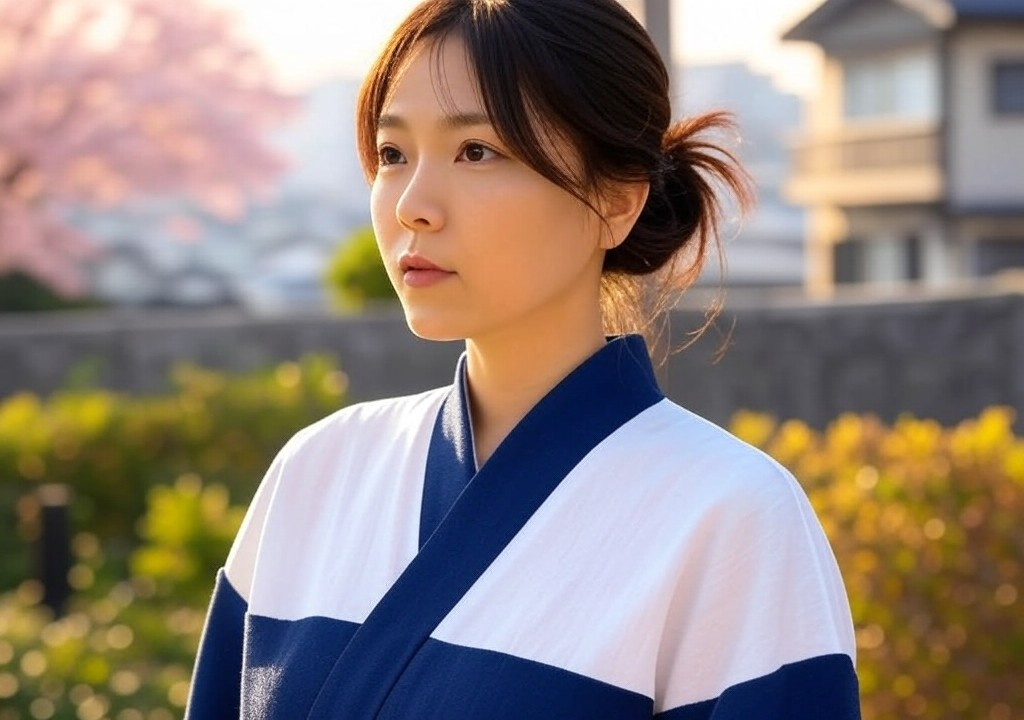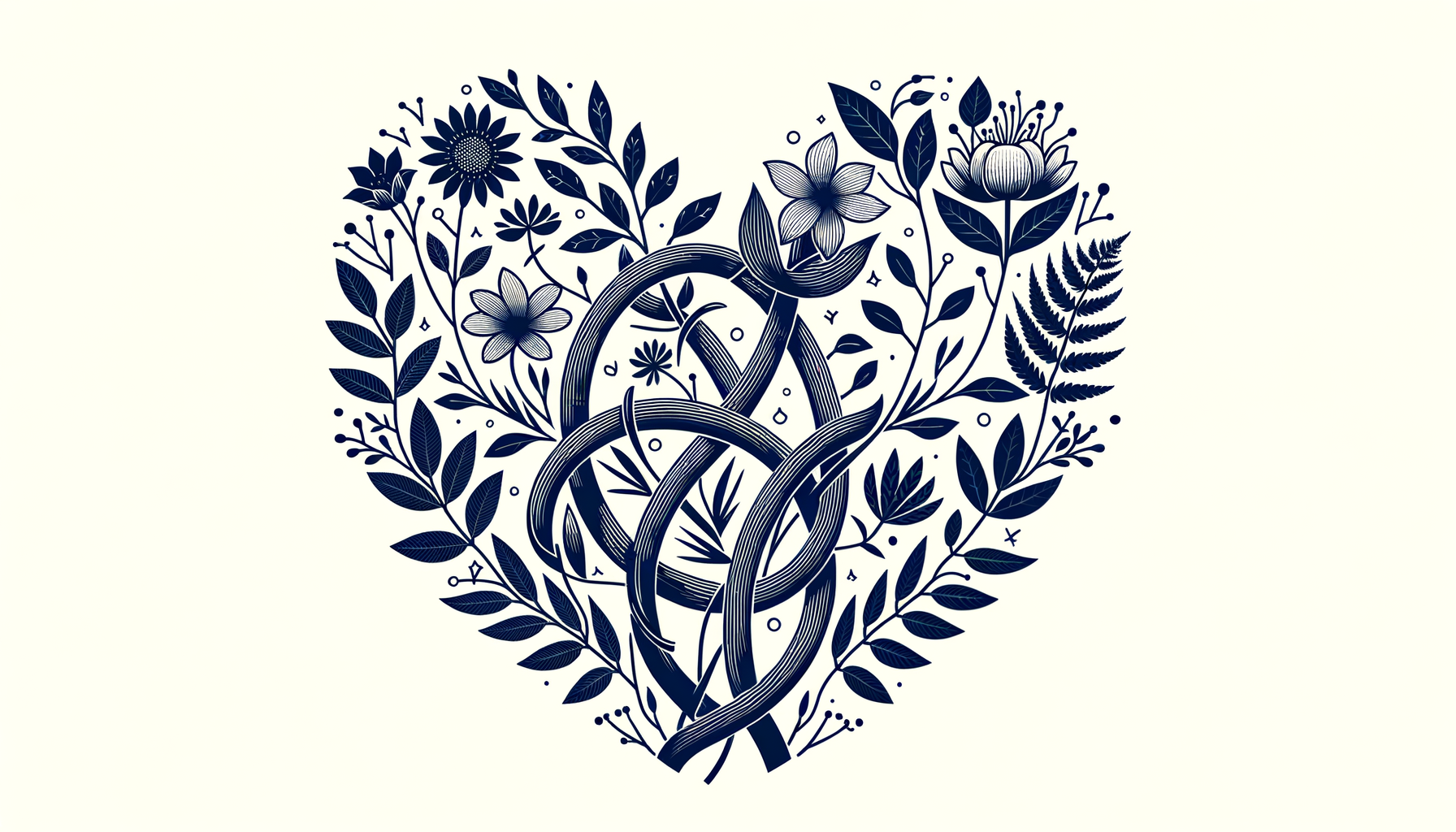Living Between Two Worlds: Navigating Dualities in Love and Life
I’d like to say I’m fluent in the art of balance, having grown up between the traditional rhythms of a town just outside Tokyo—think plum blossoms and neatly hanging laundry—and the fast-paced hum of urban modernity just a train ride away. But truthfully? Living between two worlds isn’t elegant tai chi; it’s more like trying to navigate a crowded Tokyo train wearing oversized Canadian winter boots. Each step feels clunky, out of sync, and occasionally, suffocating.
When it comes to relationships, this duality only deepens. Growing up with my mother espousing the delicate virtues of patience (folded neatly into flower arrangements) and my father waxing poetic about history’s great entanglements, I quickly understood that love is neither just tradition nor reinvention—it’s this awkward, wonderful dance between the two. And like all good dances, I’ve stepped on my fair share of toes along the way.
Here’s what I’ve learned about love, life, and those of us caught in between—whether “between” is cultural, personal, or professional.
The Balancing Act of Expectations
Growing up in Japan, dating advice often came wrapped in grandmothers’ whispered proverbs or friends quoting completely unhelpful manga dialogue. I’d hear things like, “A man of few words shows depth,” or the classic, “He who eats the last bit of the hot pot loves you the most.” Meanwhile, my brief stints in Paris and later in Canada introduced me to a different paradigm: bold declarations, unfiltered emotions, and the occasional romantic text message sprinkled with so.many.emojis.
Navigating these mixed signals felt like walking on a tightrope spanning two mountain peaks. For instance, on one of my dates in Canada, a charming man named Greg offered to bring me wine for a movie night—only to arrive with a bottle of rosé, fully expecting me to be impressed. In Tokyo, that same scenario would be borderline scandalous (wine at home? Is it a marriage proposal?!) and require weeks of careful planning to “read the room.”
What I’ve realized is this: we often hold ourselves hostage to cultural or family expectations that no longer fit who we are today. Here’s how I shifted my thinking:
- Ask yourself where the expectation comes from. Is it tradition? Society? Your own inner critic? Dissecting the source of pressure helps loosen its grip.
- Look for the harmony. You don’t have to abandon one world for the other. Keep the traditions that ground you and adapt those that don’t. For example, I’ll respectfully bow to my sushi chef in Tokyo but refuse to bow to Greg’s tasteless rosé. Balance!
- Give your partner a cheat sheet. It’s not always obvious to them that you’re navigating two or more cultural playbooks. If they’re genuinely in it for the long haul, they’ll want to understand what shapes you.
Lost in Translation—And Why It’s Okay
Remember the movie Lost in Translation where Scarlett Johansson sits in her Tokyo hotel room, lost in thought while the neon city buzzes outside? That’s me whenever someone asks to "define the relationship." In some cultures, including traditional Japanese ones, love isn’t spelled out in bold letters. You let things evolve, slow and steady, like a kabuki performance. In the West? Love often feels like you’re auditioning on a reality dating show, required to spill your innermost thoughts by the third date or risk being “ghosted.”
The awkward truth is, sometimes relationships feel like trying to order coffee in a foreign language. You think you’ve got it—hai, latte kudasai!—only for the barista to tilt their head and hand you herbal tea. Miscommunication is inevitable. Here’s what’s helped me bridge those gaps:
- Don’t assume your partner knows what you mean. Be explicit about what you want and need, even if it feels vulnerable or clunky. Speaking directly isn’t conditioned in every culture, but neither are psychic abilities.
- Laugh at the missteps. There’s a kind of intimacy in shared awkwardness. Like the time I called a Canadian boyfriend aisai-ka—a word for “ideal husband”—and he thought I was joking. (Spoiler: I wasn’t.)
- Appreciate the differences. Instead of trying to fit your partner into a checklist, use your curiosity. Their perspective broadens yours, and sometimes, their quirks (rosé included) grow on you, too.
The Permission to Be Unresolved
Here’s the thing no one tells you about living between worlds: there’s no shiny resolution. I can trace my life in a zigzag pattern—Tokyo, Vancouver, Paris—but I’ll always feel a little untethered. And maybe that’s the beauty of it.
For years, I struggled with the idea of having to “choose.” Should I adopt the quiet, respectful dating patterns of home, or embrace the direct, raw honesty I admired in some of my Western partners? The truth is, I ended up creating my own version, taking bits and pieces from each. That means I hold space for small acts of kindness—a handwritten note, a shared cup of green tea—but also for open conversations about mismatched love languages and future plans.
To everyone trying to navigate their own in-between spaces, here’s my advice:
- Let go of perfection. Living between two worlds is messy by nature. Don’t overthink how to “get it right.” There’s no one right way to love.
- Celebrate the contradictions. These contradictions—direct and indirect, bold and patient, traditional and modern—are what make you interesting. Learn to love the nuances you bring to a relationship.
- Remember: You’re not alone. There’s comfort in realizing that so many of us are living in the “middle space.” There’s no passport required for this emotional terrain, but you might find some familiar faces along the way.
The Takeaway: Loving the In-Between
Whether it’s love or life, the journey between worlds is less of a straight path and more of a trail covered in cherry blossoms—beautiful, fleeting, and sometimes confusing. The key isn’t to over-define it or resolve it but to embrace it for what it is: an ever-evolving work of art.
So the next time Greg shows up with his lackluster rosé, or someone misunderstands your moonshot-like confession of love, take a deep breath, laugh it off, and remember: you’re living your very own dual-world love story.
And if you ever feel completely lost, just turn on Ryuichi Sakamoto, pour yourself a drink (rosé, maybe?), and remind yourself that the best connections aren’t either/or—they’re both/and.




















